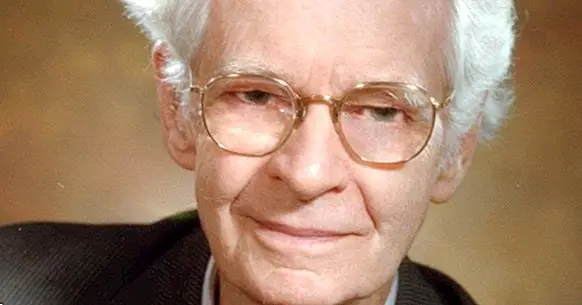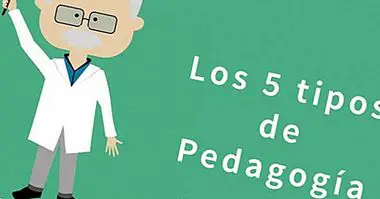Programmed Teaching according to B. F. Skinner
In 1954 Burrhus Frederick Skinner, the famous behaviorist who developed the paradigm of operant conditioning, began to design a "teaching machine" that could promote learning more effectively than traditional educational methods, which the author considered ineffective and criticized. with remarkable success.
In this way Skinner created a programmed teaching method based on operant conditioning that would have a great impact on the educational context of the second half of the 20th century. In this article we will explain exactly what the programmed Skinnerian teaching consisted of.
- Related article: "The theory of B. F. Skinner and behaviorism"
Skinner's criticisms of traditional teaching
Skinner thought that traditional teaching was based on excess in punishment ; in operative terms, he affirmed that the behavior of the students in the classroom was controlled mainly by aversive stimuli. This means that children learned to act in a way that avoided bad grades, criticism from adults or teasing from classmates.
However, the investigations of Skinner and his followers demonstrated clearly that reinforcement is more effective than punishment for learning new behaviors . In this sense, he not only identified an excessive use of punishment but also a low frequency of reinforcement; attributed this fact to the excessive number of students per teacher.
In addition, according to this author, on the rare occasions when reinforcers were administered to students this usually happened with a lot of time delay with respect to the execution of the relevant answers. Another of the basic principles of operant conditioning is that reinforcement is most effective when it appears immediately after the behavior.
The last of the key shortcomings of traditional teaching noted by Skinner was the lack of systematization in educational programs . The father of operant conditioning believed that teaching should be based on the method of successive approximations, by which responses are reinforced closer and closer to the objective.
- Related article: "Radical behaviorism: theoretical principles and applications"
Principles of Programmed Teaching
Skinner's method is probably the most famous in the field of programmed teaching; however, it is not the only one that exists.
It is characterized by its linearity, since it follows a fixed sequence of contents (which differentiates it from Crowder's branched programming), as well as its four basic principles.
1. Establishment of clear objectives
Unlike many of the predominant educational methods of the time, Skinner's programmed teaching placed great importance on establishing the objectives of the educational program to be designed. In this way it was possible to optimize the tasks and the presentation of the contents according to different aspects, mainly the difficulty.
2. Division of educational content
In Skinner's method, successive divisions of educational material are made: first the programs are separated into modules, and these into frames or frames with concrete contents. As we will see in the next section, the teaching was carried out through a linear succession of texts (or other types of materials) and evaluation exercises.
3. Increasing difficulty of learning
Another central aspect of programmed Skinnerian teaching is that the learning material is presented gradually according to the relative difficulty of each of the segments. Given that we situate ourselves in the context of the operating paradigm, we can speak specifically of the molding or method of successive approximations .
4. Active participation of students
The fourth basic principle of Skinner's educational model is the relevance given to the active participation of students in their own instructional process. This clashes frontally with the techniques of receptive and rote learning characteristic of traditional teaching, which do not promote at all motivation on the part of the student.
Skinnerian teaching machines
Skinner named "GLIDER" the teaching machine he designed . It was a mechanical device that allowed automatic control of the learning process, since it was strictly planned following a linear progression. In this way he developed programs for the teaching of spelling, mathematics and other academic subjects.
Teaching through these machines consisted of a reinforcement program typical of behavioral guidance.We say that it had a linear character because texts and exercises were presented following a fixed sequence, determined mainly by the difficulty of the segments of material that the students had to learn.
Individually, students read a short segment of material (a frame or picture). Next they have to answer a question; the answer is in absent word format, which consists of filling in a blank space. The teaching machine immediately informs the student if it has failed or succeeded , which is a reinforcement.
When the student responds correctly to the evaluation exercise of a specific content, it goes to the next frame and possibly receives another type of reinforcement. If it fails, you can revisit the learning material until you succeed and continue with the training program.



















